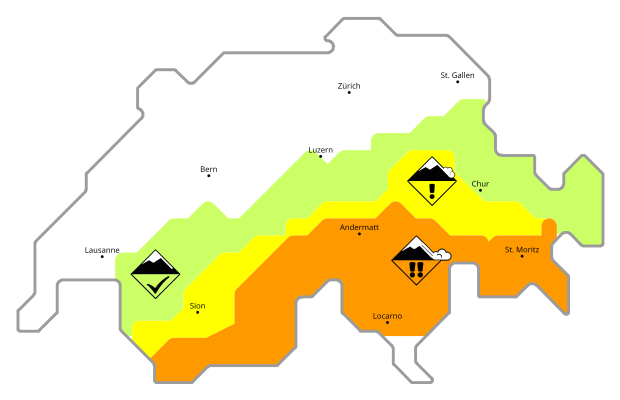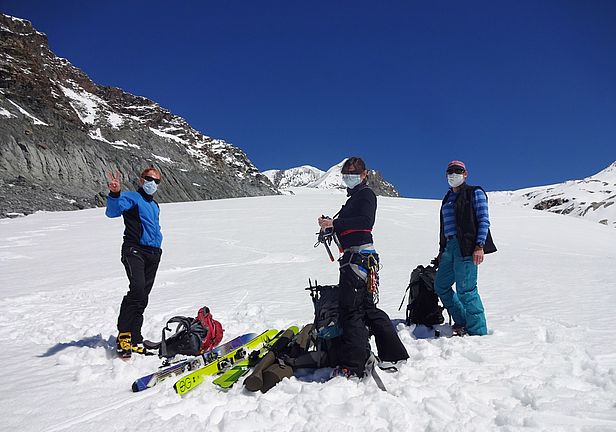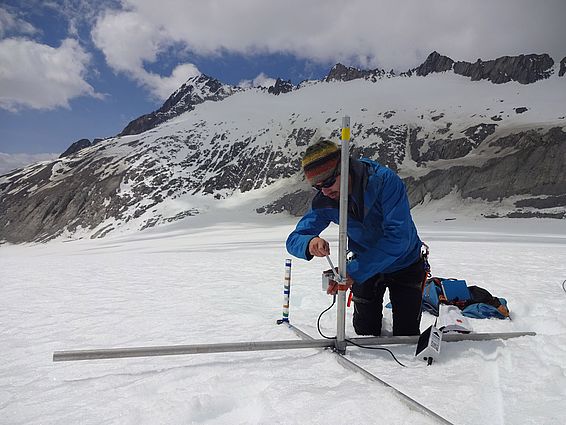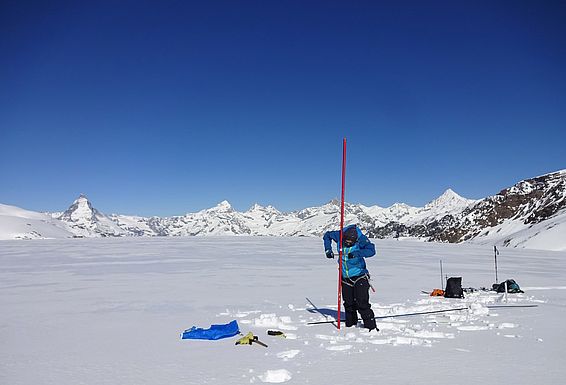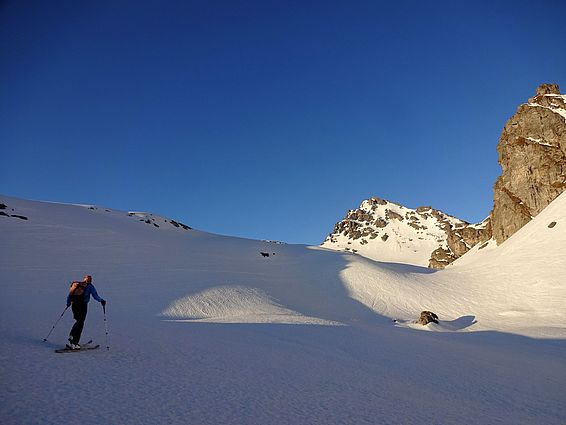4.8.2020 | Logbook
[Translate to Englisch:] Autor
Even during lockdown, WSL glaciologist Matthias Huss had to measure glaciers – without using cable cars. Instead, he and his team made their way to the mountains on skis or in a military helicopter. In the WSL logbook, Huss tells about how this worked out.
We went into lockdown in mid-March. Everything suddenly came to a standstill. We immediately realised that this would jeopardise our extensive Swiss glacier measurement campaign, which was scheduled to take place from early April to late May. Within the Glacier Monitoring in Switzerland (GLAMOS) network (see www.glamos.ch/en), my colleagues and I are responsible for coordinating, implementing and evaluating long-term measurements – that is, monitoring – and continuity is a top priority.
Long-term measurement series at risk
We carry out the same observations at the same time every year to document the impact of climate fluctuations on glaciers. We conduct two surveys on over a dozen glaciers across Switzerland: the survey in late winter is intended to determine snowfall, while the September survey measures melt. Some data series go back more than 100 years and were even continued during both world wars, so we have a duty to ensure continuity during the coronavirus pandemic.
The main obstacles facing us were logistical in nature. We normally use mountain railways during measurement campaigns, as they allow us to reach the glaciers quickly. However, railways and cable cars were closed and there was nothing we could do about it. It seemed we would have no choice but to take the ‘athletic’ route and ski up from the valley. As lockdown began, it was also unclear whether we could use helicopters to take us to various glaciers. Group size was an issue too. We usually work in teams of up to eight people when we take measurements on larger glaciers, but such large groups were prohibited under federal regulations. We decided to continue working from home and hope that lockdown measures would ease somewhat. It was not easy to remain patient, especially in early April when the weather conditions were perfect. But then came the light at the end of the tunnel. Some lockdown restrictions were eased, allowing us to carry out measurements in small groups.
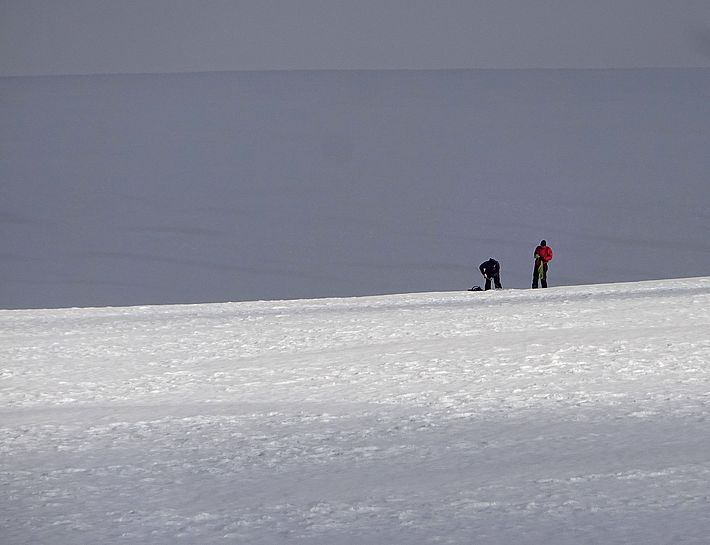
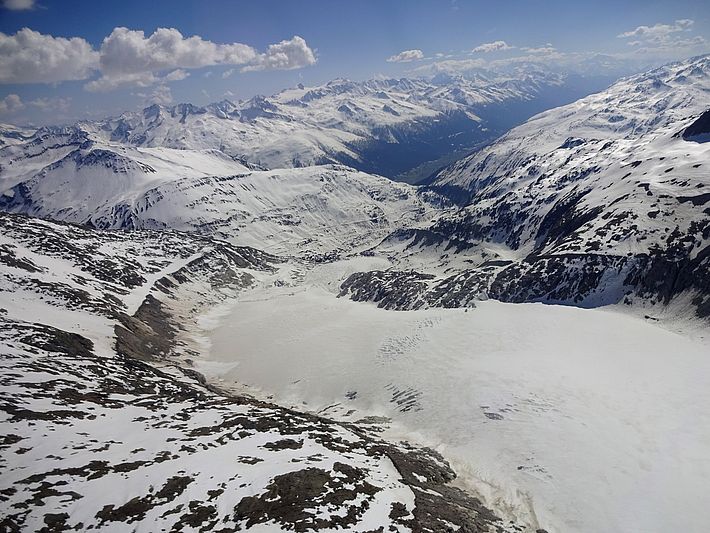
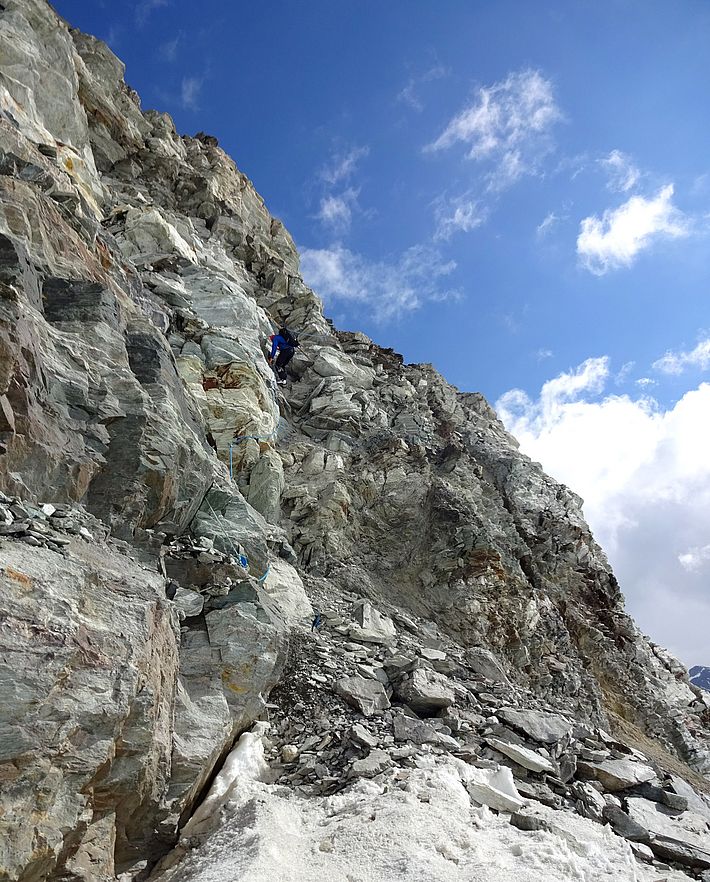
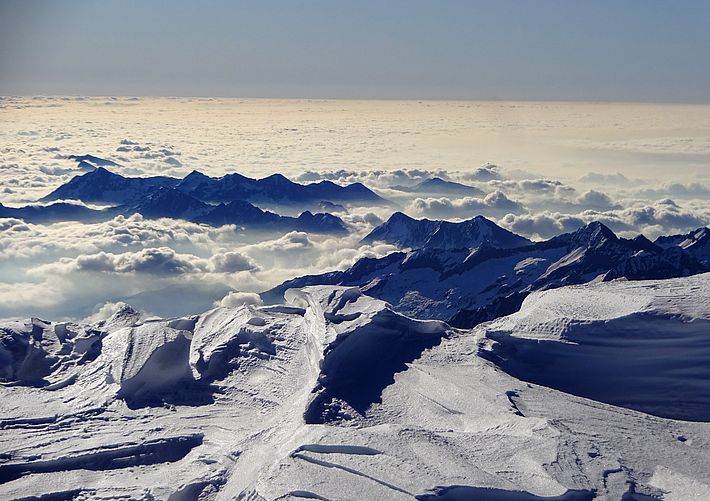
Reaching glaciers by military helicopter
In pairs, we skied the long distance to three of the glaciers. Although we had to do without some of our heavy measuring devices, we were still able to collect vital data, thus ensuring the continuity of the series. The support of the Swiss military was a stroke of luck. Since they had some spare capacity, we were able to fly directly onto several glaciers in a large helicopter, allowing us to maintain a safe distance from one another even in the air. We would have struggled to access these glaciers any other way.
Although we were still working in much smaller teams than usual, we managed to collect reliable data on snow depth and density in all areas of these glaciers. We had to stay in a hotel overnight while measuring one of the glaciers in Valais. We received a very warm welcome in Täsch’s only open hotel. We were the first and only guests the hotel had seen for two months and there was of course more than enough space for us to maintain social distancing.
We ultimately visited 14 of the 15 glaciers we normally measure, while an automatic observation station on the remaining glacier provided at least some of the required information. Although we collected somewhat less extensive data than we have in previous years, we are nevertheless more than satisfied with how everything has turned out. When lockdown started, we did not expect to be able to continue every series of measurements. Fortunately, everything came together just in time: some restrictions were eased, the weather was stable and our team was very much ready to collect the data we needed.
Average winter, early melt
The measurement data show that winter 2019/2020 was not so bad for Swiss glaciers, despite the warm weather on the Plateau and the low levels of rainfall from March onwards. Though the snow water equivalent (i.e. the volume of water in snowpack) in the east of the country was slightly below the average for the past decade, it was actually somewhat higher in Central Switzerland, in the west and in southern Valais. Nevertheless, glacier tongue melt started early this year. The final report will be compiled in September, at which point it will become clear how glacier melt was affected by an average winter combined with the temperatures over the summer.
